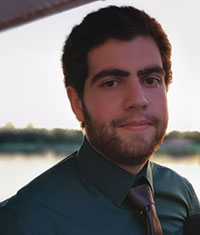Wits PhD student wins prestigious John Kiel Scholarship
- Wits University
Pedro Ornelas is one of 72 students globally who won an award from the International Society for Optics and Photonics.
Wits PhD student, Pedro Ornelas, has won the prestigious John Kiel Scholarship from the International Society for Optics and Photonics (SPIE).
 Ornelas, a student in the Wits Structured Light Laboratory at the School of Physics won the scholarship for his work on new topological features embedded within entangled states of quantum structured light, under Professor Andrew Forbes. His aim is to use these non-local topological features as resources for future quantum communications protocols and technologies.
Ornelas, a student in the Wits Structured Light Laboratory at the School of Physics won the scholarship for his work on new topological features embedded within entangled states of quantum structured light, under Professor Andrew Forbes. His aim is to use these non-local topological features as resources for future quantum communications protocols and technologies.
Ornelas’ US$ 10 000 (about R190 000) scholarship will enable him to further his research in tailoring features of classical structured light (lasers) and quantum light sources in ways to make them more robust to environmental disturbances.
“This research will hopefully make these light sources more versatile in various contexts, such as classical and quantum communication and computing,” says Ornelas.
The selection process for the SPIE scholarship was highly competitive. Ornelas was awarded the prize based on the promise that he has shown for potential to the fields of optics and optical engineering. His recent work published in Nature Photonics on Non-local skyrmions as topologically resilient quantum entangled states of light has also been received favourably by the optics community. This research showed that topological or geometric structures can be embedded into light, and in particular the “spooky” connection that exists between distant entangled photons has a topological signature.
Ornelas’ scholarship is part of US$303 000 that SPIE has awarded to 72 SPIE student members. Since this program began in 1978, SPIE has distributed more than $7.5 million dollars in individual scholarships.
Ornelas believes the work that he is busy with in structured light explores uncharted territories, filled with exciting surprises.
“I am excited about the potential this research has to revolutionise information encoding schemes by manipulating the topologies of entangled quantum states and allowing them to serve as robust resources for future quantum technologies, including secure quantum communication and quantum computing,” he says.
“There are several avenues to take this work, currently I am investigating the robustness of non-local topological features under realistic noisy scenarios and then hope to develop techniques for the rapid detection of such features.”

